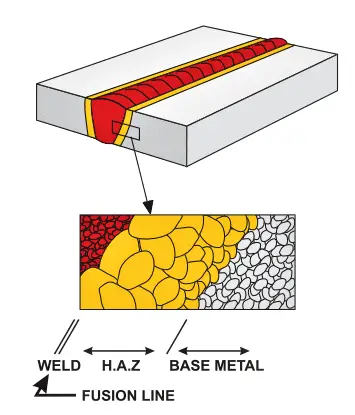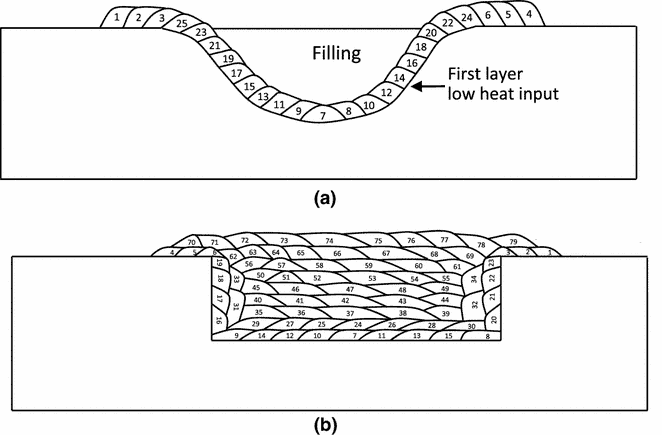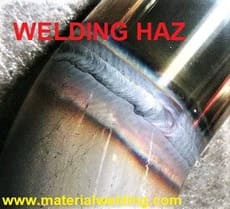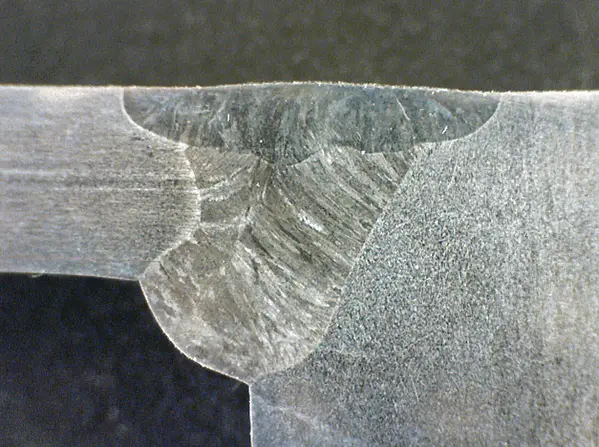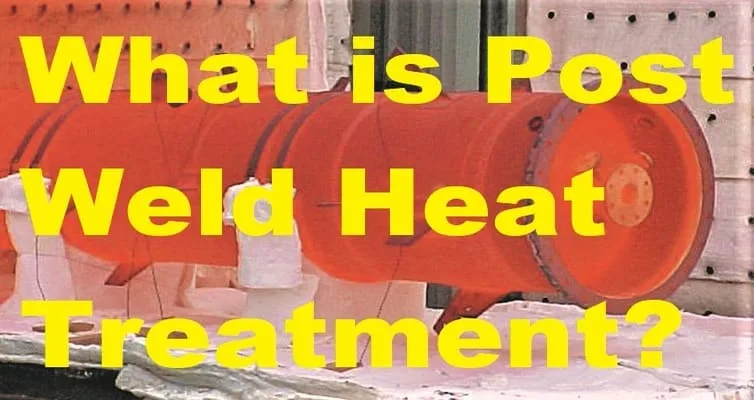This post covers the effect of heat input in welding on weld metal & HAZ toughness, hardness, microstructure and mechanical properties based on research work.
Effect of heat input in welding
Heat input within the weld pool and the droplet includes heat transfer by conduction, convection, and ohmic heating.
Heat input for a specific process is dependent upon the arc energy & the welding process efficiency. The heat input in welding is responsible for thermal effects on the weld metal and heat affected zone (HAZ).
Influence of heat input on toughness (CVN)
The toughness of weld metal is influenced by Heat input, chemical composition, microstructure, and weld cooling rate. A low heat input results in rapid cooling and can have high toughness microstructure in the weldment while a high Heat Input results in slower cooling but results in very coarse HAZ with poor toughness in the weldment.
Researchers found that Heat input (HI) range of 2 kJ/mm for optimum toughness properties in the weld metal of C-Mn chemistry.
An increase in Heat Input resulted in increased bead size and width of the columnar grains with an increase in pro-eutectoid ferrite by replacing the acicular ferrite at the expense of toughness properties.
A reduction in Tensile Strength resulting in higher Heat Input produced grain growth in reheated regions replacing both coarse and fine grain zones. An increase in Heat Input resulted in larger cellular dendritic cell spacing, decreased acicular ferrite, and coarser acicular ferrite laths.
lower heat input values offer better toughness results compared to higher Heat Input in HSLA steel weldment.
High heat input results significant decrease in acicular ferrite with coarse grain structure in the weld metal which resulted in a significant decrease in toughness properties of Weld Metal at 0°C. Acicular ferrite in the microstructure significantly affects low-temperature toughness properties.
An increase in acicular ferrite gives an increase to the toughness properties. Hence a lower heat input value favoring the growth of acicular ferrite (in the weld metal is beneficial for higher toughness properties as higher Heat Input results in a more diffusion-controlled phase during solidification (transformation from austenitic to ferrite) and reduction in the acicular ferrite due to controlled diffusion.
A low Heat Input results in rapid cooling in the vicinity of the A1 temperature from acicular ferrite which is more equiaxed.
Influence of heat input on tensile strength
Tensile strength (T.S.) and yield strength (Y.S.) of the weld metal reduce with an increment in heat input values. Obviously, high heat input produces a slower cooling rate, thus yielding a soft microstructure with reduced yield strength.
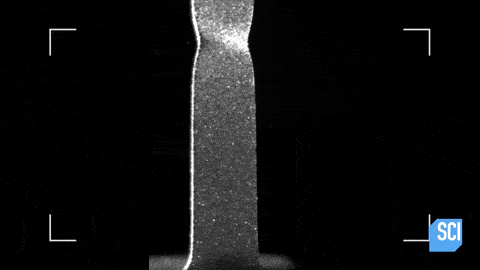
Influence of heat input on weld metal microstructure
In ASTM A572 Gr. 50 material which is having similar chemical composition to SA516 Gr. 70 with high heat input SAW welds reported heat input as the main contributing factors for the microstructural properties.
High heat input (7.8 kJ/mm-14.3 kJ/mm) produced a very low level of acicular ferrite with an increase in primary ferrite and aggregates ferrite-carbides. The figure below shows that acicular ferrite & second phase ferrite have a steep decrease with an increase in heat input values from 4.8kJ/mm to 14.3kJ/mm in SAW weldment.
The figure below shows the changes in the microstructure of the weld metal that occurred due to an increase in heat input. At a heat input value of 4.8kJ/mm, the proportion of acicular ferrite at a high level compares to very low levels for high heat input of 14.3kJ/mm.
This reduction in acicular ferrite is accompanied by a rise in primary ferrite and ferrite-carbide aggregates.

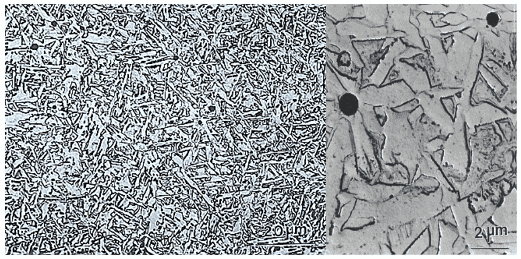
The figure above shows the microstructure of a low carbon low alloy steel with a predominant presence of acicular ferrite. The right side shows the structure at higher magnification with black spots as the inclusions.
analyzed that low heat input with higher weld passes produces ferritic structure vs. graphite structure formation due to high heat input with a lower number of weld passes in the weldment zone of SA 516 Gr 70 material using the SAW process.
Influence of heat input on weld metal hardness
An increase in HI resulted in a decrease in hardness values of the weldment. The lowest heat input produced the highest hardness and an increase in heat input values results in decreased hardness results.

The welding thermal cycle affects the parent metal adjacent to the weld metal which has been raised to a temperature above the upper critical temperature. This area is called the heat-affected zone (HAZ).
The hardness of the HAZ depends on the chemical composition and its cooling rate. A material’s critical cooling rate decreases as the carbon content increases. If the carbon content exceeds about 0.25%C and the cooling rate exceeds a certain minimum value, referred to as the critical cooling rate, martensite will form in the HAZ.
The hardness of a material that has been heated to its upper critical temperature, e.g., hardening temperature (i. e. 860° for 0.2C, 770°C for 0.7C) and cooled, is a function of the composition of the material and the cooling rate. (e.g. when cooled at their critical cooling rates a 0.3C steel would have a hardness of 640 HV and a 0.7C steel would have a hardness of 920 HV.)
A slower cooling rate would give a lower hardness. The addition of alloying elements reduces the critical cooling rate and can cause hardening with mild quenching (eg. oil and air-hardening steels).
The critical cooling rate of a 0.42C, 0.55Mn steel is 5000°C/Sec. The addition of manganese to give a composition of 0.4C 1.6Mn alters the critical cooling rate to 50°C/Sec. To reduce the hardness of the heat-affected zone (HAZ) it is important that the cooling rate be reduced to an acceptable limit.
Effect of high heat input in welding
A high Heat Input results in slower cooling but results in very coarse HAZ with poor toughness in the weldment.
A high Heat Input result in increased bead size and width of the columnar grains with an increase in pro-eutectoid ferrite by replacing the acicular ferrite at the expense of toughness properties.
A High Heat Input in Welding results in:
- Decreased Weld metal toughness
- Decreased Yield Strength
- Poor HAZ toughness
- Large grain ferrite
- Reduction in weld and HAZ hardness
Effect of Low heat input in welding
A low heat input results in rapid cooling and can have high toughness microstructure in the weldment.
Generally, a Low heat Input in Welding results in:
- Improved weld metal and HAZ toughness
- Increase in yield strength
- promoted acicular ferrite formation
- Increase in weld hardness


